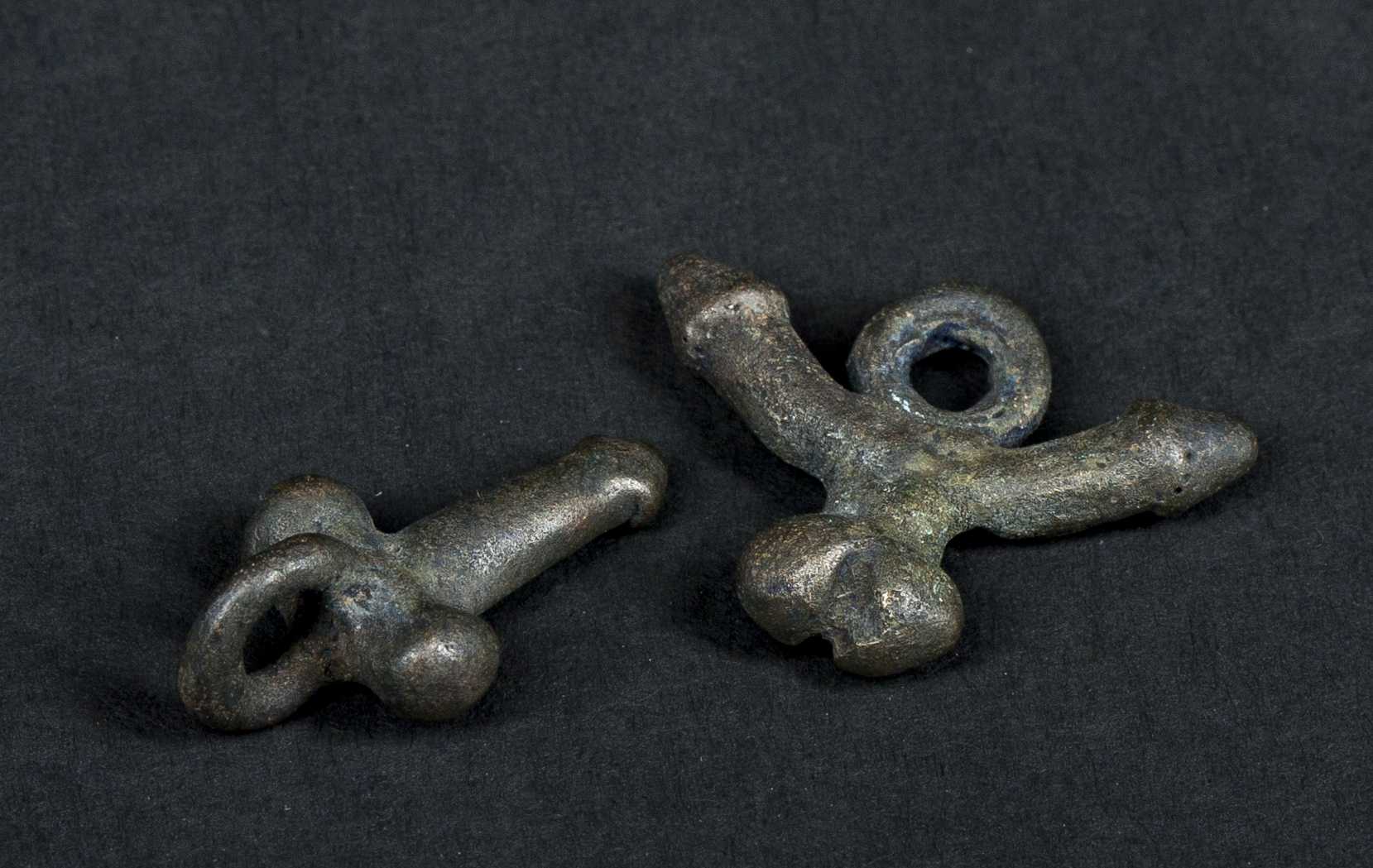

“The ancients would place in orchards and gardens a phallic stone to promote blossoming and fructification,” says the book Larousse Greek and Roman Mythology. So it's better not to look at it as one would look at the Olympian gods with their nobler attributes, in my opinion.”

Writing to Ancient Origins in e-mail, Galassi said: “Priapus was very popular in ancient Italy, but he was more of a rustic god. The ancients identified Priapus with agrarian divinities, Pan in particular.

His cult later spread to Greece and Italy. Aphrodite was scared of Hera and abandoned Priapus on the banks of a river near the Hellespont. Hera, jealous of Aphrodite because she was declared most beautiful, cursed Priapus in the womb. The son of Dionysus and Aphrodite was also symbolized by the donkey, flowers, fish, vegetables and bees. The image from Pompeii shows Priapus with a bowl of fruit, one of his symbols. It was found in Rivery, in Picardy, France in 1771 ( Wikimedia Commons ) This statuette has been dated to the late 1st century C.E. –Dr Galassiīronze statuette possibly of the Roman fertility god Priapus, made in two parts (shown here in assembled and disassembled forms). defects of the genitourinary tract including phimosis, have been the subject of artistic representation since the dawn of mankind, dating back to prehistory and showing a high degree of precision, which permits to formulate retrospective diagnoses. “These symbols were meant to propitiate a rapid resolution of phimotic conditions in adolescents who experienced this medical problem,” he wrote. Apotropaic means it has the power to ward off evil. Even in more recent times, he wrote, wax phallic images continued to show the condition as an apotropaic measure. Poet Sappho, the Isle of Lesbos, and sex tourism in the ancient worldĭr Galassi wrote that in rural Italy, images of Priapus were often shown with shut phimosis as a way to ward off the condition in the male family members.Vestal Virgins: The Pious Maidens of Ancient Rome.The Houses of Pleasure in Ancient Pompeii.Dr Galassi told Ancient Origins via e-mail that phimosis can be very painful and predispose a person to infections.
#CONVIVIAL PRIAPIC FARRAGO MORASS SKIN#
“This condition presents different grades of severity, and this specific case appears to be of the highest grade, in which there is no skin retractability on the glans,” writes Dr Galassi in a new paper in the journal Urology. The condition has been treated historically with circumcision, but more recently males who have the painful condition are given corticosteroids. Galassi, an MD now back in Italy after working at Imperial College London, the Pompeii fresco depicts Priapus with a case of shut phimosis-in which the prepuce covering the head of the penis does not withdraw down the shaft, says a new study he co-authored, along with Stefano Galassi. He is usually depicted with an oversized, permanent erection, which gave rise to the medical term priapism, a painful medical condition in which the erect penis does not return to its flaccid state.ĭue to Google rules on nudity, the image could not be displayed here, but can be viewed here.Īccording to Dr Francesco M. In Greek mythology, Priapus was a minor rustic fertility god, protector of livestock, fruit plants, gardens and male genitalia. To make matters worse for poor Priapus, the goddess Hera laid a mighty curse on him to make him ugly, impotent and foul of mind.Ī fresco in the House of Vettii in the ancient ruins of Pompeii shows the god weighing his huge member against a bag of gold. An Italian doctor and researcher says one of the most famous paintings of the rustic divinity depicts the god with severe phimosis-a painful, unhygienic condition where the foreskin of the penis cannot be retracted. Maybe Priapus, the ancient Greek and Roman god with the enormous phallus, was not so lucky after all.


 0 kommentar(er)
0 kommentar(er)
